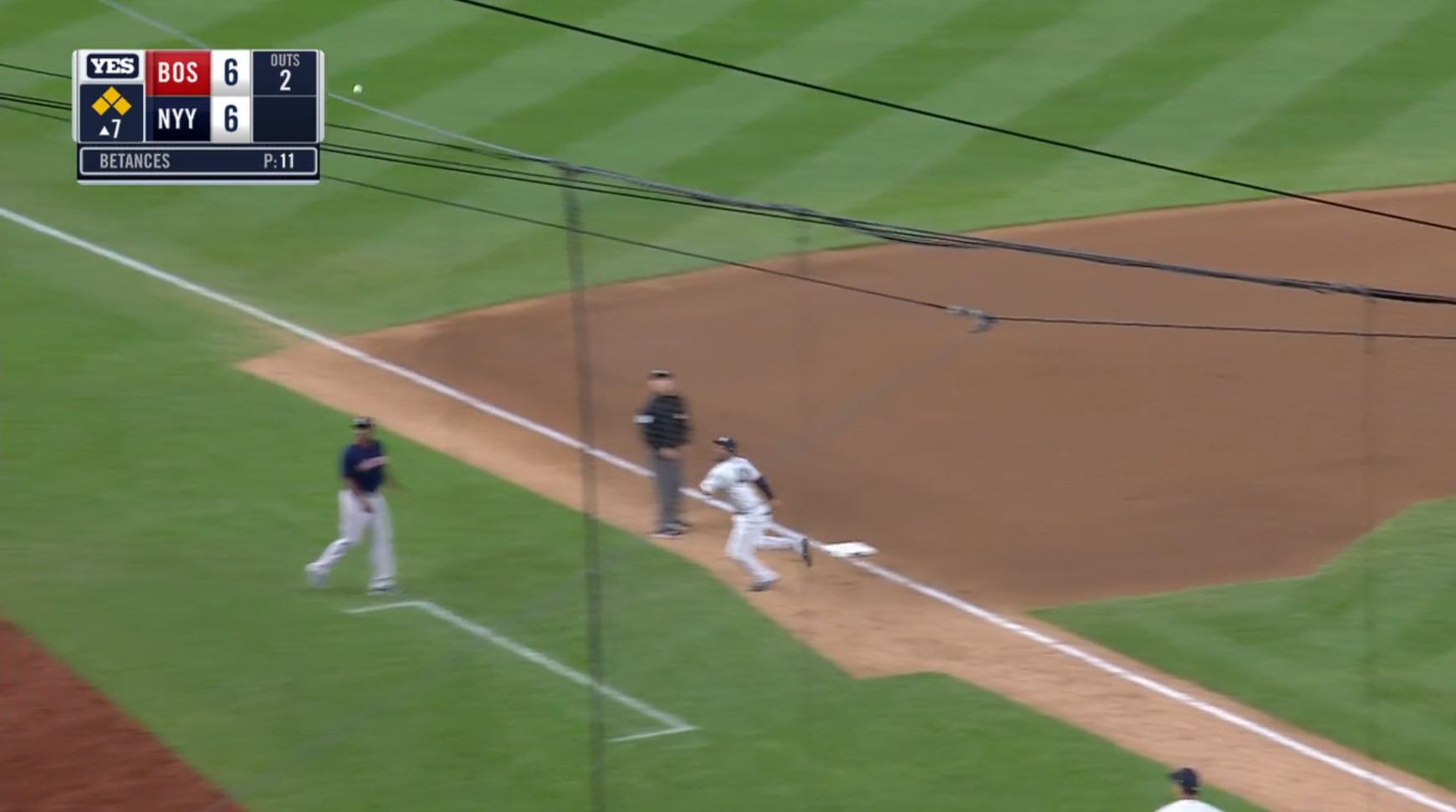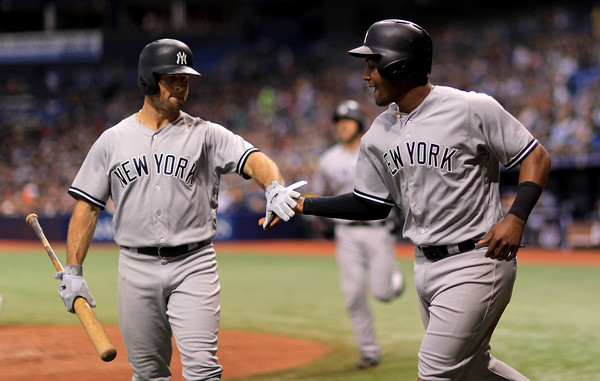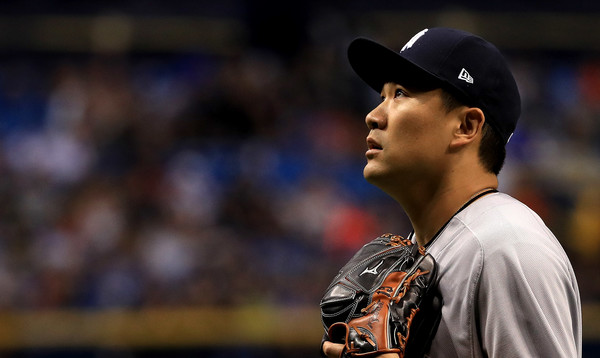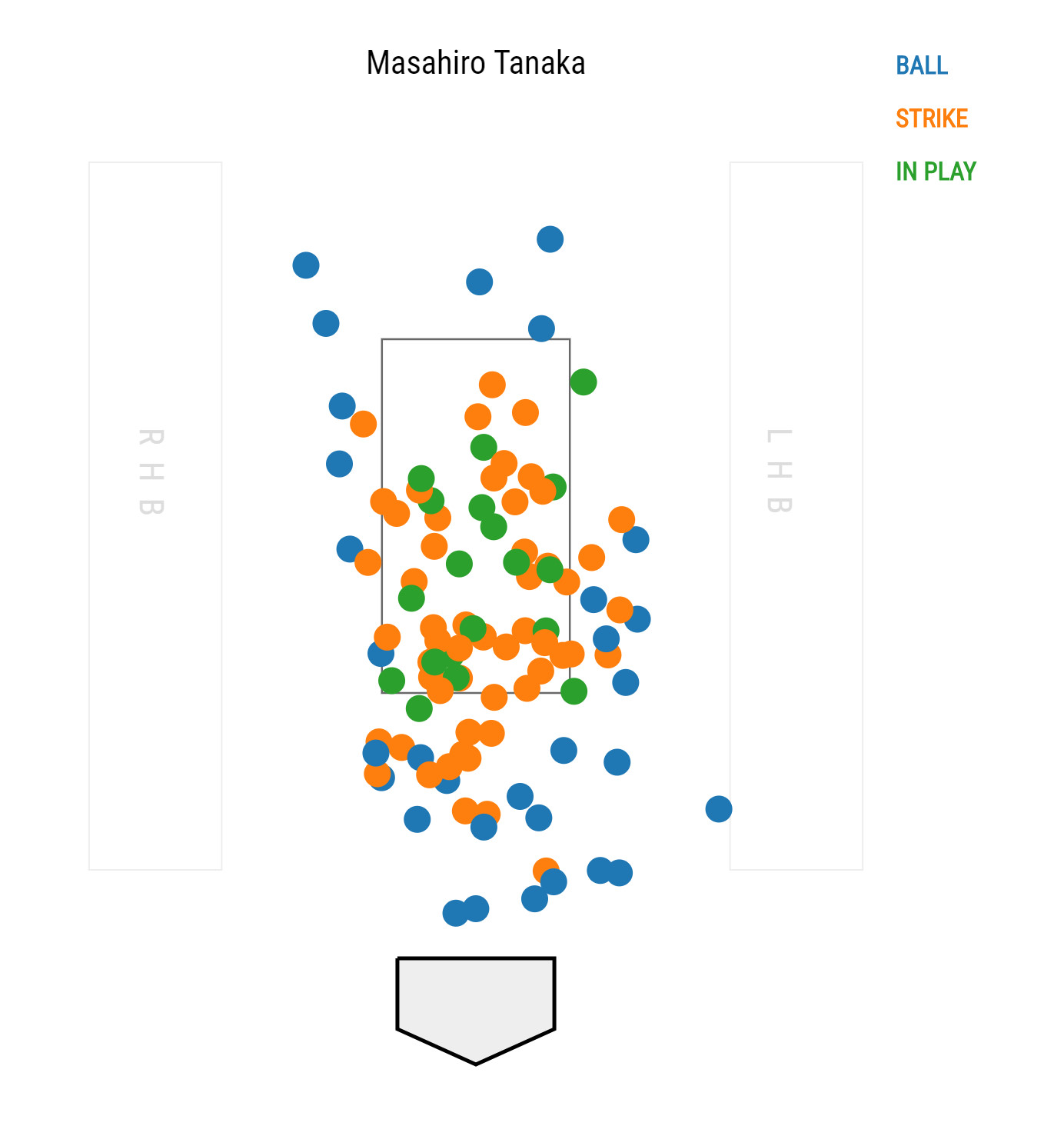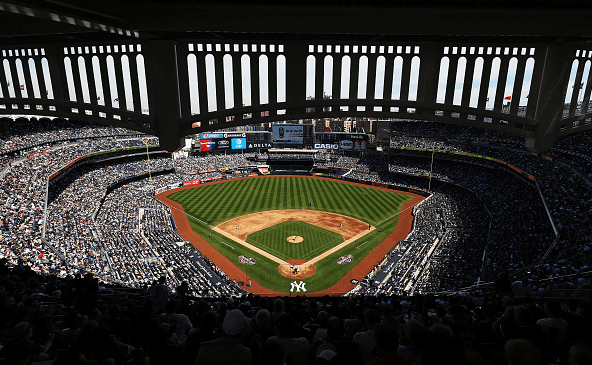
In January 2017, the Yankees were doing the “Winter Warm-Up” series to introduce newer players to the fanbase through sandwich workshops, surprising ticketholders, going to museums, etc. At one point, they also had a presser at the Yankee Stadium. I was informed of the opportunity to cover it for River Avenue Blues and simply took it. I had dreamed of being a part of the press corp at the Yankee Stadium someday and it was happening.
While I was soaking it all in in the Yankee Stadium hallways, all by myself, I saw Brian Cashman walking from a distance. I would recognize that face from just about anywhere. I was wearing a University of Maryland jacket at the time. Cashman, who also went to a school in Washington, DC area (Catholic University of America), saw that. He said, “Maryland, huh?” We had a little conversation about DC area, the winter weather, the Yankees, etc. At some point, he looked at the credential card hanging below my neck and said this:
“River Avenue Blues! Love the website. I read it all the time.”
I’m not going to sugarcoat that comment too much. It’s obviously a weighty praise especially given the context. What I want to emphasize here more is how a website created by fan bloggers – out of labor of love, nonetheless – became so developed and established enough to get first-hand praise from the general manager of the New York Yankees, earn a commercial spot at the YES Network, get funding to pay the writers, etc. It just goes to show us, while it may be daunting to start something from scratch, the persistence and the love for it can lead it to something so impactful. This not only goes for baseball blogs but also for pretty much everything in our lifetime.
It’s been awhile since I wrote on this website. A lot of things have happened to me for the past half a year or so. I got hired by FanGraphs, I joined Baseball Prospectus to occasionally write about Korean baseball, I contributed for The Athletic, etc. It’s not easy to openly admit this but things shifted a bit for me in terms of my career opportunity and priority – but I always had River Avenue Blues in the back of my mind, because for me, this is where it all started.
Truth be told, this website is the foundation for all of what I’ve been able to do in the baseball media. As it is the case for many that are trying to find a footing in an industry they’re trying to enter, there was a time where I couldn’t get any publication’s attention to save my life. I was contacting basically every blog’s emails to give them my hand. At some point, I got Jay Gordon’s attention and wrote about a few Korean players for River Avenue Blues. Jay and Mike got back to me a few months later and asked me if I wanted to be a contributor for the site starting the 2015 season. As someone who was trying to find a footing somewhere writing about something I love, it was an offer I couldn’t pass.
I was a reader before I was a writer. I can’t exactly pinpoint when I started to read RAB, but it was around 2007 or 2008. River Avenue Blues was my main reading spot for Yankees information along with LoHud Yankees Blog. I was in high school at the time and had no idea what I was going to do with my life, so I never really saw myself ever writing for the site. Flashforward to junior year in college, I declared journalism and *kind of* saw myself writing about baseball in future. I tried taking essential reporting and journalistic writing classes and it turned out I was pretty trash at that (at least back then). I ended up switching to broadcast journalism and took up internships in sports radio and television. I thought my future was in working the radio control board, editing soundbytes on Adobe Audition, cutting video files and putting captions, etc. It wasn’t glamorous, but I would have been more than okay going that path.
Even doing all that, there was always a thing in back of my mind that I yelled at me about baseball writing. I took one sports writing class – and I did pretty okay in it – but my connection to the industry was pretty lacking. I had no sports writing internship, my school newspaper’s sports section was quite filled up, etc. yes, these are bunch of excuses, but having been in the industry for a bit by now, I learned that these things matter. I got my foundation of all these through River Avenue Blues.
Writing for RAB was a trip – I got a lot of the “real life work experience” moments through my first several blog posts. I was sloppy, lacked attention to detail, attracted some critical comments, etc. I felt like a pitcher who just got called up from minors who was too amped up to find a strike zone. Usually, writers get yelled at by editors or other higher-ups for such mistakes. But RAB people have been very gracious – they always had my back, they allowed me to improve by my own and most importantly, they never hesitated to give me a confidence boost. So many times, I’ve seen a lot of my peers from school get burnt out in writing industry for various reasons. For me, however, it was all joy. The more I wrote for RAB, the more I was enthralled with baseball writing.
I know I talked a lot about myself and my experience of the website but it’s much moreso about guys like Mike, Ben, Joe, Jay, Betsy and others who have laid the foundation for River Avenue Blues to be such a big part of many Yankee fans’ online fandom. It’s also about people like Derek, Steven, Matt, Bobby, Katie, Domenic and Ashley who contributed their time and effort to also make this blog much moreso than just a blog. This site was a community: where anyone could come in and get their daily dose of the New York Yankees.
Yankee fans are lucky that there isn’t exactly a shortage of Yankees contents around the web, but I can’t help but feel like it will leave a huge void in my mind knowing that there won’t be any newer RAB posts starting April 30. At the same time, it is what it is. As Mike said, River Avenue Blues lived about a billion years old for blog standards, and it would not have been possible without the love of everyone – especially you, the readers – involved. Whoever you are, thank you for reading this blog post and this website. I hope you are having a nice day.

















